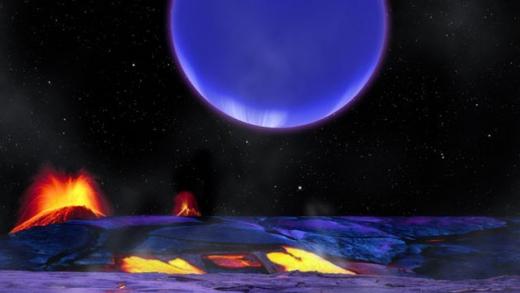Scientists used to assume that if other stars had solar systems, they would be like our own - small, rocky planets (i.e. Mercury, Venus, Earth and Mars) orbiting relatively close to the star, with gas giants (think of Jupiter, Saturn, Uranus and Neptune) farther out.
So much for that.
Since the 1990s, astrophysicists report they have identified at least 600 stars with planets circling them and found that solar systems like ours are a rarity.

Take Kepler 36, reported Friday in the journal Science.
It's a solar system about 1,200 light-years away, with two very different planets right on top of each other (illustrated above). One's a rocky "super Earth," about 1.5 times as large as our world. The other is a gaseous "hot Neptune," about 3.7 times as large.
They are the closest of any planetary system found to date, and were found using NASA's Kepler probe, which has been planet-hunting since 2009.
Both worlds are so close to their host star that they zip around it in 14 and 16 days, respectively, and are five times closer than the moon is to us.
To put that in perspective, if you've ever been struck by moonrise on a summer night, imagine a moon about 12 times as large high in the sky.
adam carolla rick neuheisel rick neuheisel andrea bocelli john hughes panasonic lumix dmc lx5 ucla football
No comments:
Post a Comment
Note: Only a member of this blog may post a comment.